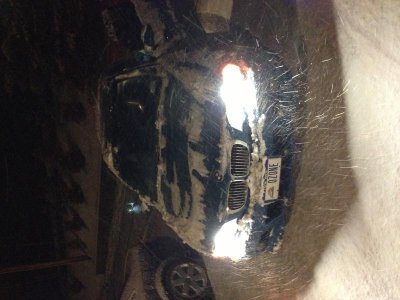Tks Ken. I found the first reference to be useless
That's odd, because I consider it the most thorough test I could ever imagine. They did their testing under a variety of rigorously controlled conditions. And its conclusions couldn't be any clearer:
AN OVERVIEW OF STUDDED AND STUDLESS TIRE TRACTION AND SAFETY said:
1. Studded tires produce their best traction on snow or ice near the freezing mark and lose proportionately more of their tractive ability at lower temperatures than do studless or all-season tires.
2. The traction of studded tires is slightly superior to studless tires only under an ever-narrowing set of circumstances. With less aggressive (lightweight) studs being mandated, and with the advent of the new “studless” tire, such as the Blizzak, since the early 1990s, the traction benefit for studded tires is primarily evident on clear ice near the freezing mark, a condition whose occurrence is limited. For the majority of test results reviewed for snow, and for ice at lower temperatures, studded tires performed as well as or worse than the Blizzak tire. For those conditions in which studded tires provided better traction than studless tires, the increment usually was small.
3. The precise environmental conditions under which studded tires provide a traction benefit are relatively rare. The maximum frictional gain (in comparison to nonstudded (not studless) tires) is found for new studded tires on smooth ice, where they have been shown to provide up to 100 percent gain in certain tests. However, the relative frictional gain of studded tires diminishes or becomes negative on roughened ice, as the temperature drops, as the studs wear, or if the comparison is made with studless tires.
Of course, you're welcome to believe something you apparently just want to believe, even though it's totally disproved by two different sets of tests conducted under rigorously controlled conditions. I think it's just plain silly. And furthermore, I can tell you that my experience using both studded tires and studless tires in forty Chicago winters confirms what those tests are telling you. I would never, ever choose studded winter tires over studless winter tires. Studded tires just aren't as good in winter cold, compared with Blizzaks, X-Ice, and similar tires.
Of course, here in Chicago, it gets pretty cold; half our winters it gets down to -9F (-23C) or colder, when the studless tires are far better. Maybe it doesn't get all that cold where you are. But I can tell you right now, if you're in a winter climate that gets cold and you're used to studless winter tires with good tread depth, and you switch to studded tires, you're probably going to be disappointed when you find that they don't like frigid temperatures. They can also be pretty darn noisy when the pavement is dry, worse than studless tires - not that that's what you get winter tires for anyway, but still.
However, it did point me to this test which tested a brand of winter tire which is studable and they had test results with and without the studs. With the studs was noticeably better as I would have expected.
But that test doesn't compare them against studless ice and snow tires, which, as noted in both of the previous references, give much better traction in most winter conditions than studdable winter tires with studs installed.
You can ask the guys at Tire Rack what they say. They'll almost certainly tell you the same thing, especially if you talk to their folks who did their ice testing or tried various tires out on their test track in winter. In any case, it's your money; get whatever tires you want.







